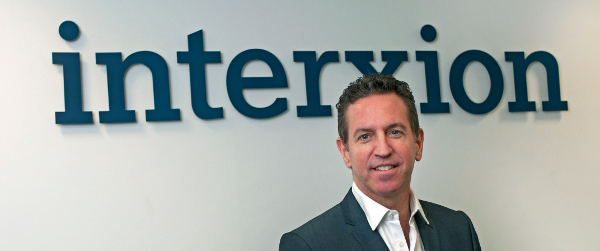
"The cloud is not in the air, it’s grounded at Interxion", says Doug Loewe, managing director at Interxion.
With this in mind, Claire Vanner spoke to Loewe about Interxion’s East London data centre and what Interxion is bringing to the enterprise cloud space.
Do you think there is a misunderstanding of cloud management?
A lot of people think that information doesn’t physically sit somewhere because it can be up in the air, but its’ only up in the air for a very short period of time, because it travels basically at the speed of light. With this whole buzzword of ‘the cloud’ the information does have to physically sit somewhere.
Can Interxion offer necessary virtualisation for companies moving to the cloud?
Most customers come to us when they’re doing a technology refresh and they don’t exactly know how many servers, therefore how many cabinets and square metres in our data centres they need. Since they don’t know, we want to be in a position to help them move their data centres around, increase or decrease depending on the benefits of virtualisation, but also be able to scale up pending success.
So we have created this concept of portability so if customers need to move their data centre from Vienna to London or from Madrid to Stockholm. We’re not 11 different companies, we’re one Interxion and we give the customer the flexible ability to be able to keep their computer assets in the optimal location.
What do businesses look for in the cloud?
Two words: reliability and flexibility. Reliability means that it’s always going to be up. From a flexibility perspective, it about being able to be private, legacy or public so they can just move through that spectrum. Within a data centre they can be all of those in one location.
And then there is geographic flexibility that they can have as an active additional location as well as having proximity to users to make the end user experience to the application really positive. And that’s true whether you’re completing a trade for a financial transaction or whether you’re trying to kick the butt of your opponent during an online game.
We have over 1400 cutomers spanning anywhere from digital media customers to financial services, enterprises, carriers, cloud providers: so those five communities are our real areas of strength.
Are you seeing growth in any verticals in particular?
The gaming industry is booming and instead of the devices being consoles at consumers homes, but more and more the gaming platforms are in the cloud. That allows for massive online, multi-user gaming experiences and those applications need to be distributed as close to the eyeballs as possible.
We’ve been spending a lot of time with the gaming community and they understand our value. The gaming community recognises that our Stockholm data centre is a fantastic platform for the Russian gaming community. It’s high performance and a super high quality data centre with optimal frequencing, because it’s colder up North, so the gaming community’s converging in Stockholm for picking up Eastern Europe.
Looking back at 2013, what would you say are Interxion’s most significant milestones of the last year?
Customers want to know that you have the planning permission and the power provisioning lined up for the future and fortunately we have planning permission for our third and our fourth data centre, that’s in the public domain. When we’ll move forward though is strictly based on customer demand.
The progress we’ve made and the solid vision of additional space is something I’m most proud of and is something that customers really look closely for.
Looking forward to 2014, what are Interxion’s aims for the coming year?
We want to enrich our data centre not only in terms of carriers but also in terms of attracting what we call core nodes to the internet exchanges is a vibrant initiative.
Replicating the cloud providers in current data centres into other ones will be a strong area of focus, but building the data centres and making sure that they’re available, such as Amsterdam, is a really good example of us building data centres with a definitive customer demand. This is appealing to our customers, our employees and our shareholders. They see real value that we’re building due to customer demand.
What are your predictions for 2014 in cloud and hosting?
I think we’re going to see customers not just rationalising their cloud strategy but actually implementing it. Fortunately, instead of having to make a decision as to where their legacy, public and private clouds are going to sit, if they come to Interxion, the foundation is already there and already convergent in our data centre environment.






